
While Asia has long been a top priority for international recruiters, large markets such as China and India have often tended to overshadow other countries on the continent. Of the other potential regions for targeted recruitment initiatives, Southeast Asia is perhaps the most valuable, with over 300,000 students from the region currently studying overseas. And with many countries currently experiencing unprecedented economic growth, the importance of establishing a presence in Southeast Asia for schools is only going to become greater.
Southeast Asia comprises eleven different countries with a combined population of 600 million people. Although there are five major language families in the region, there are several regional and local dialects and variations of each. The Philippines, for instance, is home to over 182 spoken languages.
With such incredible diversity, it would be unwise to attempt to adopt a homogenous strategy for recruitment in Southeast Asia. Instead, schools need to carefully consider which countries are likely to hold the greatest potential return for them, and develop personalised and targeted campaigns that speak directly to the values, motivations, and cultural identities of local prospective students.
Read on to learn more about some of the most important growth markets in Southeast Asia for schools right now, and how you can maximise your visibility among potential leads in the region.
The Digital Landscape of Southeast Asia: A Guide for Schools
The good news for recruitment professionals looking to gain a foothold in Southeast Asia is that the digital landscape of the region is far more familiar looking than other parts of the continent. Where schools looking to reach students in places like China, South Korea, and the Middle East have sometimes had to deal with unfamiliar search engines and social media platforms due to government restrictions and local popularity, most countries in Southeast Asia are dominated by globally popular sites.
Google is the most popular search engine in the region, with a market share of over 90% in many of the most populous countries, including Indonesia, Malaysia, Thailand, and The Philippines. Social media usage is largely driven by western platforms too, with the only notable difference being that Facebook is even more dominant in the region than in other countries. We Are Social’s Digital, Social & Mobile in Southeast Asia in 2015 report revealed that an incredible 232 million- or 92%- of Southeast Asia’s 252 million internet users were active on Facebook:
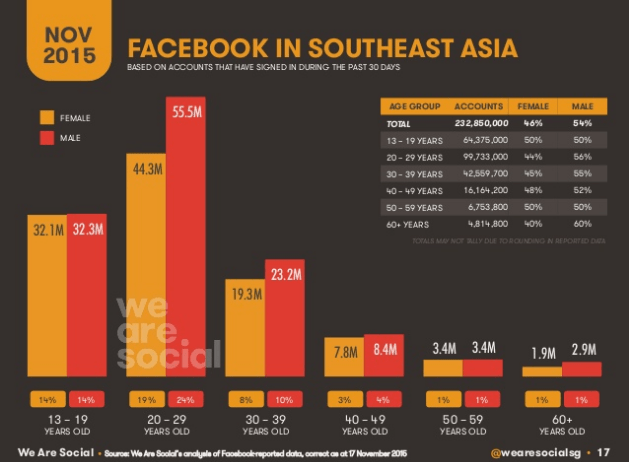
In addition, unlike many other regions where Facebook is losing its popularity among millennials, the site is extremely popular among younger demographics in Southeast Asia, with over 70% of users under the age of 30. The social media landscape is evolving, however, with some chat apps such as LINE and Viber beginning to gain popularity in specific countries.
While recruiters won’t necessarily have to deal with the blanket bans that have been imposed on many western sites in countries like China and Russia, government censorship of the internet in Southeast Asia can occasionally be an issue, and schools do need to tread carefully when posting content.
The Malaysian government has blocked sites it felt carried unfavourable content in the past, while Thailand’s government is working on a single internet gateway which will allow them to control the availability of content online. Indonesia has also made some controversial censorship decisions, becoming the first country to ban video streaming service Netflix after deeming its content unsuitable. Overall, however, Southeast Asia offers a reasonably friendly market for digital student recruitment, and schools at every level should have few problems engaging with prospective students online.
Indonesia: A Key Growth Market for International Student Recruitment
The most populous country in the region- and third largest in Asia- Indonesia offers many potential opportunities for schools. The country’s middle class is expected to double by 2020 according to recent findings by the Boston Consulting Group, while McKinsey & Company estimate that it will become the world’s 7th largest economy by 2030.
However, the country’s education system, which has historically been underfunded, is struggling to keep up with demand. In a recent report, the World Bank stressed the need for a more educated workforce, warning that, “without the right skills of youth, the growing demand for higher quality products and services may be met by importing them rather than increasing the value added to Indonesian firms.”
While the Indonesian government has recently increased its investment in higher education, many Indonesian students are turning to institutions abroad for opportunities. The country is among one of the fastest growing markets in the US, where the number of Indonesian students grew by 14% between 2009 and 2014. UNESCO data also places Indonesia among the top 10 countries for students seeking study in the Netherlands, and the 6th biggest in Australia, which is traditionally the most popular destination for Indonesian students, and currently hosts over 8,000 Indonesians across all tertiary levels.
While the majority of Indonesian students enroll in undergraduate study abroad, many also seek postgraduate opportunities after completing a bachelor’s degree at home, with some Indonesian firms even sponsoring employees to go abroad for further study. Like many other international markets, Indonesian students are most likely to be drawn to STEM subjects. In the US, for instance, this sector accounts for 31.8% of students, and schools looking to appeal to the Indonesian market may find that promoting STEM programs dramatically increases engagement from Indonesian students.
Example: The University of Kent’s admissions page for Indonesian students promotes its STEM foundation courses as a pathway to study.
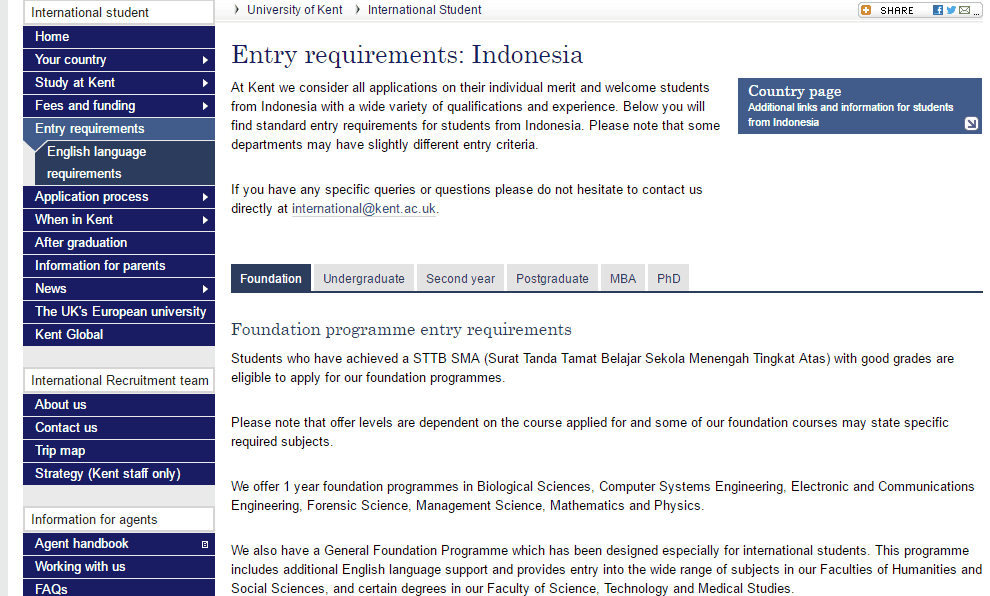
Although Indonesian students are generally very community-minded, and value the presence of people from their own culture when choosing a study destination, they also demonstrate a marked desire to expand their horizons. The popularity of the Netherlands among Indonesian students is due to the ease at which they can obtain work visas to remain in the country after graduating, while a recent study by QS Digital Solutions also revealed that Indonesian students place a high value on the opportunity to build a global network while studying abroad, with 34% of those surveyed listing it as a top priority. Recruiters looking to gain a foothold in the country can appeal to this sensibility by promoting the multicultural nature of their campus, programs, and events.
Example: York University’s multicultural work features a range of events that highlights the diversity of its student population. As you can see from the booklet below, this includes things like cross-cultural workshops, which would likely appeal to the mindset of Indonesian students seeking to build a global network.
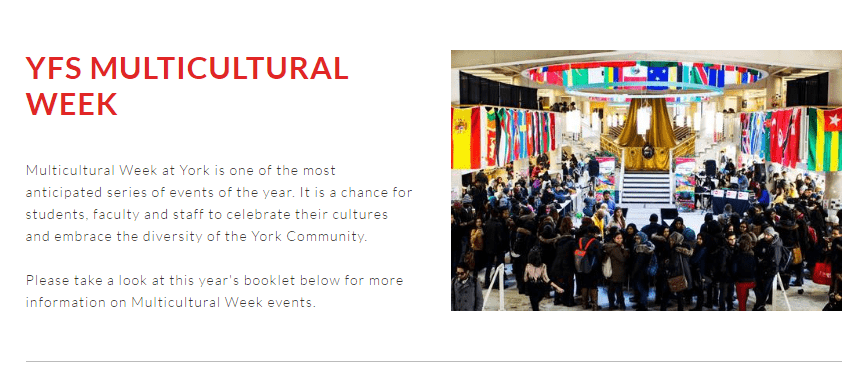

Why Everyone from Language Schools to Community Colleges Can Find Value in Vietnam
Like Indonesia, Vietnam has a booming economy and growing middle class, but is already a far bigger market for international student recruitment, with Grok Education Services predicting that the number of Vietnamese students studying abroad will exceed 400,000 in the next decade.
Vietnam is also unique among Southeast Asian countries in that students tend to favour North American institutions over Australian and European options. The United States in particular has cultivated ties with the country, and there are currently over 18,000 Vietnamese students in the USA.
However, while the middle class in Vietnam is growing, affordability is still a huge factor. The per capita GDP is still below $7,000, and many students seeking study opportunities abroad are also likely to seek scholarships or financial aid.
Interestingly, many Vietnamese students in the US opt for community colleges as a more affordable alternative to universities, and the country is currently the single largest supplier of international students in this sector, with over 6,000 students. Vietnamese students tend to favour business and finance courses, which many of these smaller schools can offer, making it an ideal fit for both parties. As a result, the country provides a unique proposition for institutions that are often somewhat shut out of the international recruitment market.
Example: Green River Community College developed a Vietnamese language version of their website for prospective students, underlining the strategic importance of the country to their recruitment efforts.
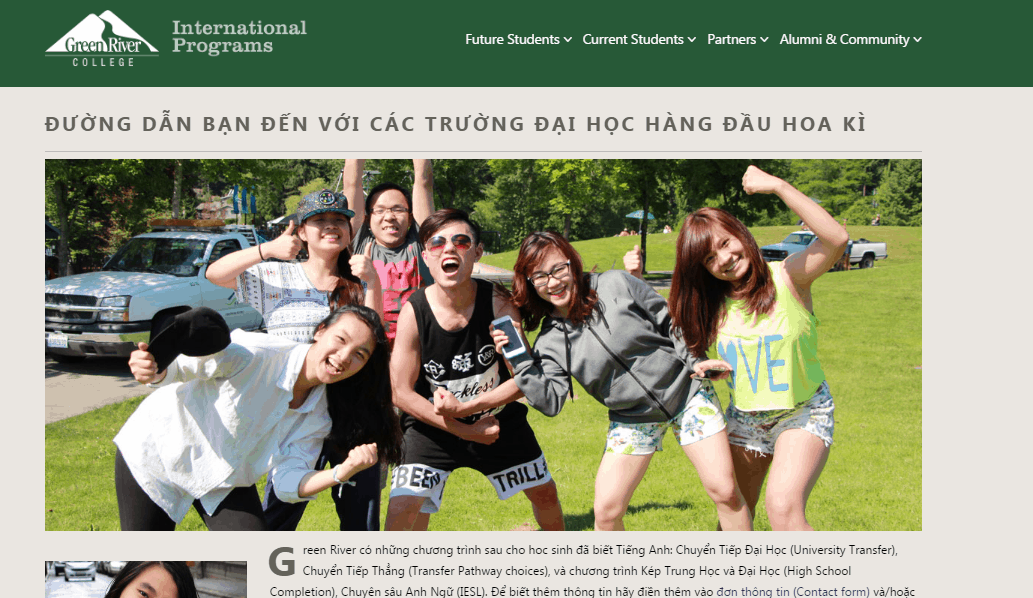
Vietnam also offers major opportunities for ESL education, with language school students making up around 20% of the country’s total international student contingent. Producing a Vietnamese version of your site and running geo-targeted PPC campaigns in the country could be extremely worthwhile for institutions working in this sector.
Example: Destination Canada, a language camp for high school level students in Ontario, also offers a Vietnamese version of their site. The school has been careful to translate every element of its site, including things like data capture form fields, which can be vital to creating an intuitive user experience for international students.
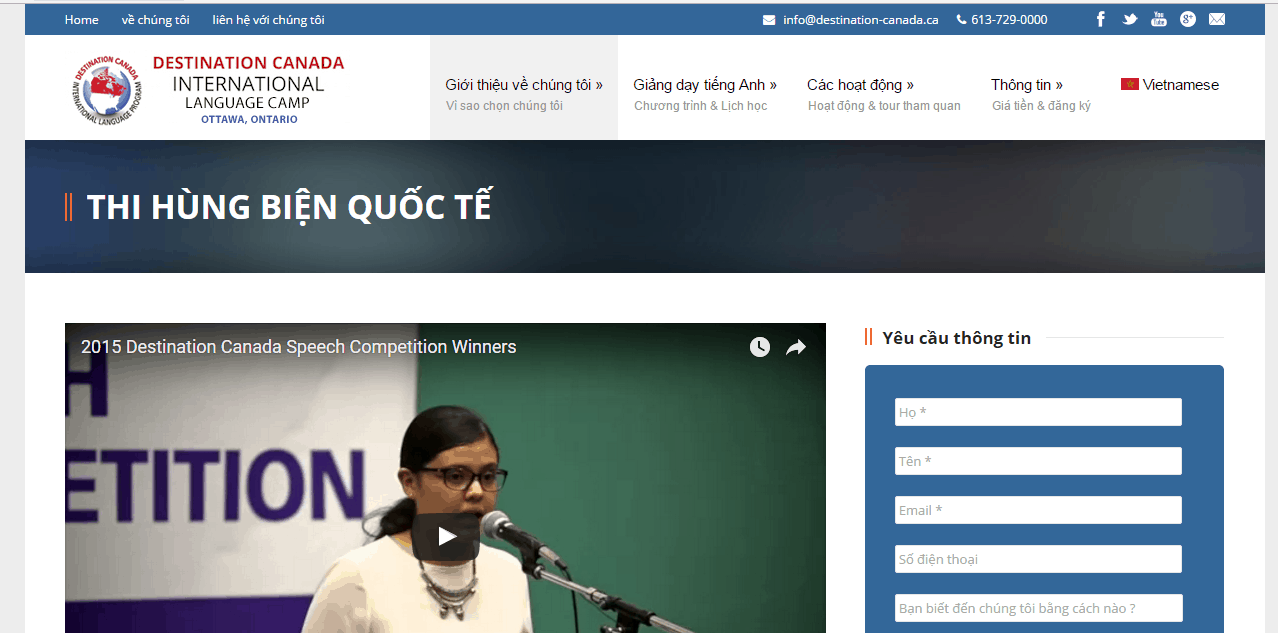
Recruiting in Thailand: Opportunities and Obstacles
Another potentially huge market for language schools is Thailand. While the country possesses a growing middle class, it remains among the lowest ranked countries in the Education First English Proficiency Index. Thai students seeking to study at colleges and universities abroad are likely to require a short-term English course or pathway program to bring their skills up to the standard required.
Example: Academic pathway programs like those offered by CultureWorks in Canada could prove popular with Thai students, as many may require additional language training before entering university.

Despite this barrier to enrolment, Thailand has a highly mobile student population, and UNESCO figures showed around 27,000 Thai students studying abroad last year, with the USA, UK, Japan, and Malaysia among the top study destinations, while China is also becoming increasingly popular.
Much of the drive towards studying abroad in Thailand is fueled by the perceived poor standard of tertiary education at a domestic level. The World Economic Forum’s 2015 Global Competitiveness Report ranked the country 87th in education at all levels, down nine places from the previous year, despite ranking 31st in overall competiveness, underscoring how the sector has failed to keep pace with the country’s development.
Schools looking to recruit in Thailand should keep in mind that, like many other Southeast Asian societies, students are likely to come from heavily family oriented backgrounds, with parents playing a crucial role in the decision-making process. Including content that speaks directly to parental concerns and motivations as well as students will be helpful in attracting Thai students.
Example: The University of Nottingham, which has a strong presence across Asia, includes plenty of information targeted specifically towards parents on its website. This can be very helpful in appealing to the family oriented mindset of countries like Thailand.

Recent Developments in Education in Malaysia and Implications for Student Recruitment
Of all the countries in the region, the educational landscape of Malaysia is perhaps the most fascinating. It is unique in not only being a large market for students looking to study abroad, but also a popular destination for international students in itself.
An extremely multicultural country, the Malaysian government has invested heavily in recent years to make its higher education system more competitive, and the reputation of universities such as Universiti Malaya and Universiti Putra Malaysia have grown significantly, with the former in particular now viewed as one of the best in the region.
The government’s Malaysia Education Blueprint 2015-2025, unveiled last year, outlines aims to improve the country’s performance in both university rankings and research, as well as to attract over 250,000 international students. The country has also struck up strategic partnerships with some western universities, most notably the University of Nottingham and Australia’s Monash University, to set up campuses in the country in a bid to attract more international students.
Example: Melbourne’s Monash University was one of the first international universities to set up a campus in Malaysia. Around one third of their 6,000 students are international, showing the growing attractiveness of the country as a study destination.
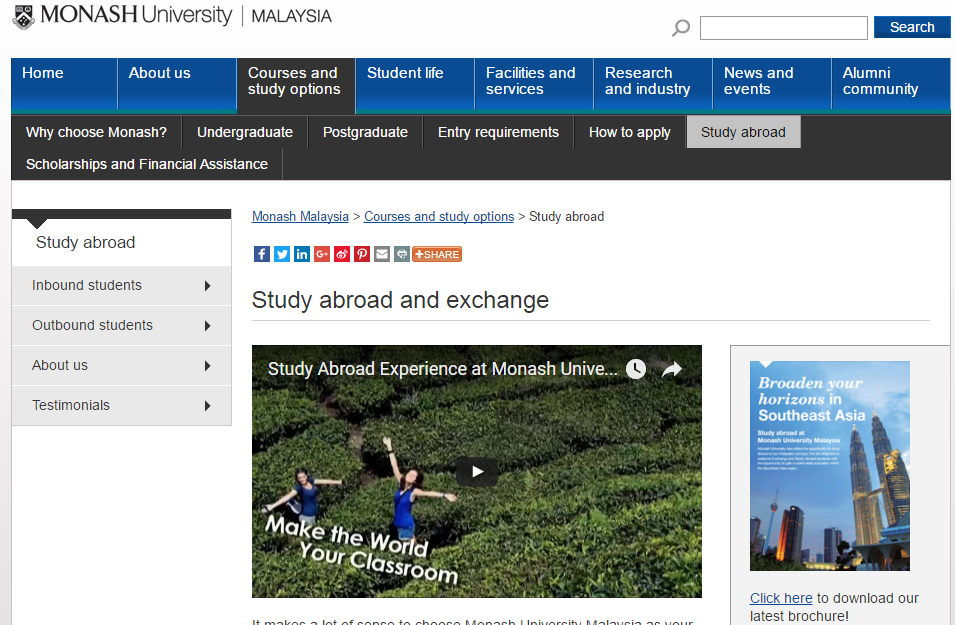
As a result, Malaysia has now established itself as a popular destination for students from other countries in Southeast Asia, where it offers a more familiar culture and environment than western alternatives. It has also become popular in Australia, partially due to a government initiative known as the New Colombo Plan, which encourages Australian students to partake in semesters abroad in the Indo-Pacific region.
This increased investment and focus on education from the government has made it more difficult for schools outside the region to attract Malaysian students. Around 30% of Malaysian students currently studying abroad receive some form of government scholarship, and as the country looks to incentivize their citizens to study locally, there are fears that the options available to those wishing to study abroad may dwindle. As it stands, the Malaysian government only offer scholarships to study in institutions ranked among the top 200 worldwide.
Nonetheless, schools may still find some joy in targeting self-funded students. Malaysian students have had a high level of mobility over the past few decades, and a number of English-speaking countries are well-established in the region, particularly the UK and Australia. As a result, graduates with international degrees are still highly sought after by Malaysian employers. Postgraduate programs, in particular, represent an extremely attractive option for Malaysian students, with many seeking further study after completing a domestic undergraduate program in order to enhance their career prospects.
Example: The University of Sheffield provides partial scholarships to both undergraduate and postgraduate Malaysian students, greatly increasing its chances of continuing to attract students from the country, even as their domestic education options improve.

Other Markets & New Developments in Education in Southeast Asia
Recruiters for all types of schools may also find a number of different opportunities to generate more student inquiries in other countries within the region. Like Malaysia, Singapore has established itself as both a major supplier of international students and an attractive study destination. Other high to middle-income countries like Brunei and the Philippines also boast a highly mobile and well-educated student population which may be attractive to potential recruiters.
In addition, many traditionally lower-income countries in the region are quickly growing and expanding, giving rise to new demand for international education opportunities. Myanmar, for instance, has seen tremendous growth as an international recruitment market recently, with radical change in both the social and technological landscape increasing the mobility of the student population. The country is a good example of how quickly things are evolving in the region, and why schools should make an effort to keep up with the latest developments.
With so much diversity throughout Southeast Asia, there is no hard and fast rule as to which countries schools should target their recruitment efforts towards, and much will depend on the nature of your school, your resources, and current reputation and links in the region. Recruiters should take time to research the market extensively in order to get results, reviewing their competitor’s activities in order to benchmark their performance and maximise their potential return.
Have you done any work recruiting in Southeast Asia? Which countries have you targeted, and what tactics have you found useful in your campaigns? Tell us about your experiences in the comments below!






